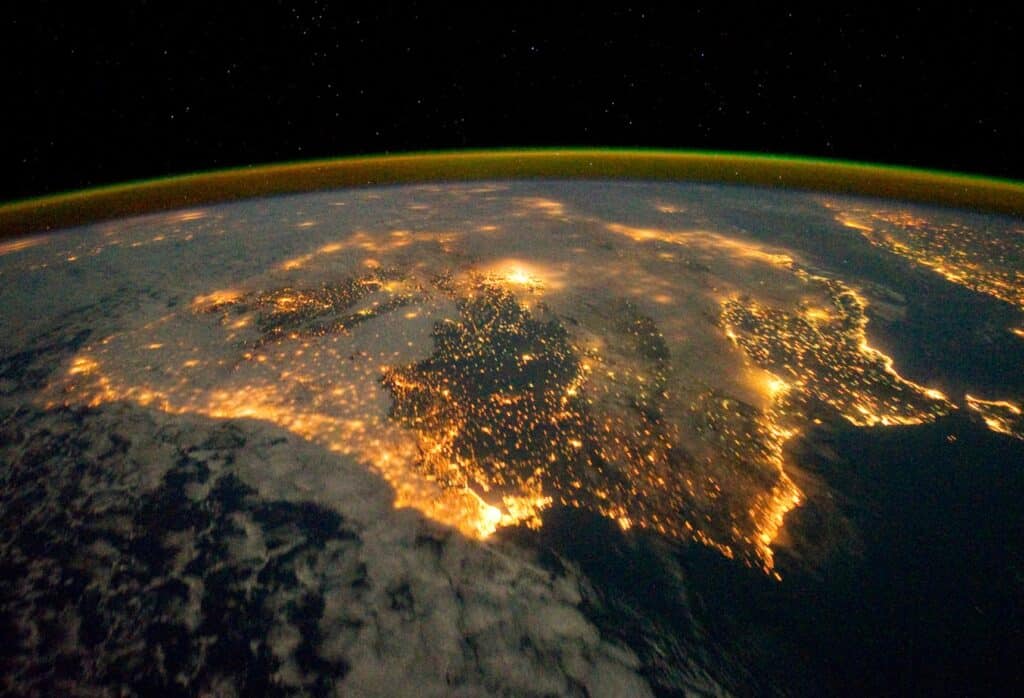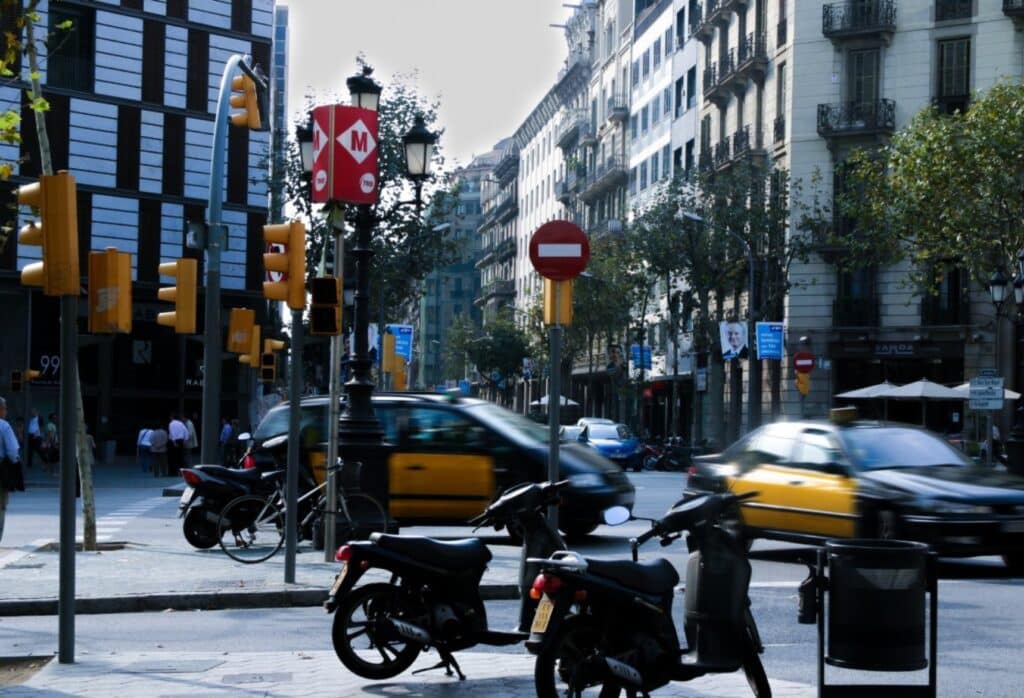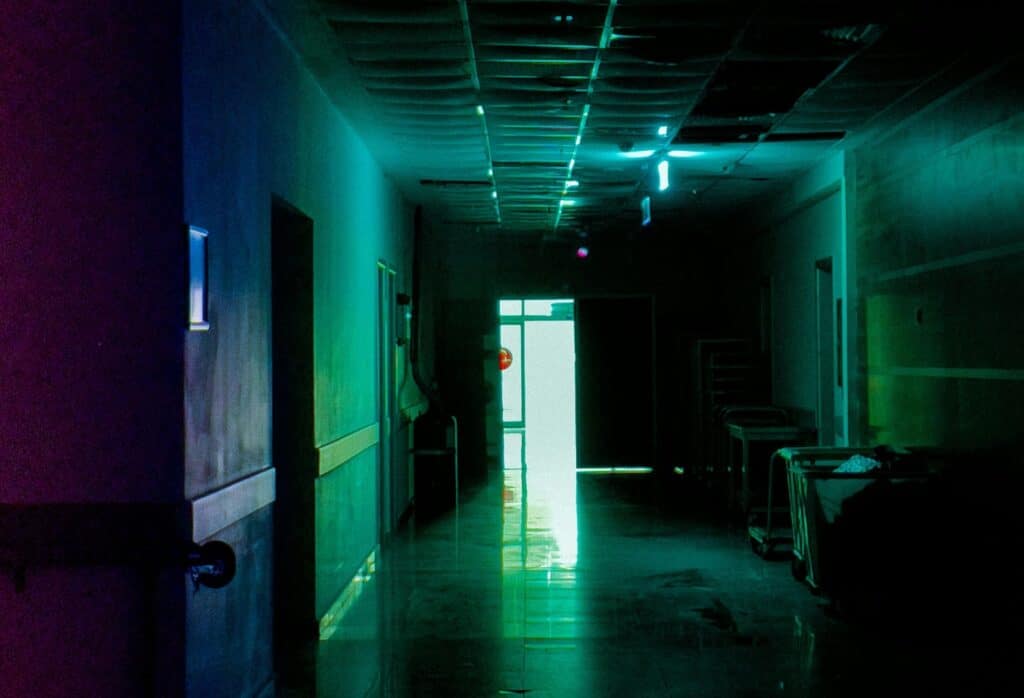The energy transition towards renewable sources is one of the greatest challenges, and achievements, of the 21st century. But like any revolution, it comes with risks. On April 28, 2025, millions of Spaniards were left without electricity for several hours during a blackout that paralyzed cities, disrupted services, and caused logistical chaos. Was it the fault of renewables? No. Was it related to poor management of the energy transition? Possibly.
This blackout in Spain is not a reason to stop the shift, but a wake-up call to do it smartly, with planning and technology.
Table of Contents
1. What Caused the Blackout in Spain on April 28, 2025?
The main cause was a critical failure at an electrical substation in Aragón, which triggered a domino effect across the high-voltage grid operated by Red Eléctrica de España (REE). Within seconds, the system collapsed from the northeast to the center of the peninsula, cutting power in cities like Madrid, Barcelona, Zaragoza, and Valencia.
- Line overloads during an early heatwave
- An aging infrastructure unable to efficiently redistribute load
- Lack of automatic response capability in certain regions
2. Why Did It Happen in Spain?
An interconnected… but vulnerable grid

Spain has a meshed electrical grid, meaning all regions are interconnected. This allows electricity to flow from generation areas (like wind farms in Aragón or Castilla-La Mancha) to consumption zones (like Madrid or the Mediterranean coast).
But this interconnection has a weak point: when a key element fails, the domino effect can be catastrophic. And that’s exactly what happened.
The growing weight of renewables
Spain is a global leader in clean energy, with over 50% of its electricity coming from renewable sources. While this is great news for the planet, it presents new challenges:
- Solar and wind energy are intermittent and volatile
- Traditional infrastructure is not adapted to manage sudden changes
- Lack of battery storage to balance the system
3. Logistical Chaos
The blackout in Spain had an immediate and widespread impact on logistics operations across the country.
Trains and metros stopped
In Madrid and Barcelona, commuter trains and metro lines came to a halt mid-route. Stations went dark, escalators stopped, and thousands of people were left stranded.
Traffic lights down

Traffic lights in urban areas and key roads stopped working, leading to traffic jams, minor accidents, and last-mile delivery chaos in cities.
Gas stations offline
Many gas stations were unable to operate, as they couldn’t pump fuel without electricity. Trucks and commercial vehicles couldn’t refuel, further disrupting the logistics chain.
The impact on freight transport and urban systems shows just how fragile logistics can be in the face of a blackout.The Blackout in spain has caused severe damage.
4. Could It Happen Again?
Yes, and the risk is not limited to Spain. As countries adopt more renewables without modernizing their grids, blackouts could become more frequent. Main causes include:
- Extreme demand peaks (heatwaves or cold snaps) that exceed system capacity
- Grid instability due to an oversupply of intermittent renewables (solar, wind) without enough storage (batteries, green hydrogen)
- Unexpected technical failures, such as those in substations or transmission lines, undetected due to lack of predictive monitoring
- Obsolete networks unable to handle fluctuations or redistribute power flexibly
Recent examples in Europe and the U.S. show that without investment in smart grids and backup systems, these incidents will continue. The solution lies in combining AI, energy storage, and infrastructure modernization.
5. Could AI Have Prevented It?
Artificial Intelligence: Real-time prevention and adjustment
AI is a key tool to prevent blackouts in modern power systems. How?
- Smart forecasting: Anticipates demand surges (e.g. during heatwaves) and balances the system in advance
- Automatic optimization: Activates batteries (e.g. Tesla Megapacks) or lowers non-essential consumption instantly
- Predictive maintenance: Identifies patterns in grid data to anticipate failures like the one in Aragón
Countries like Australia and California have already avoided blackouts using these systems. What happened in Spain could have been avoided.

AI also enables:
- Adaptive responses to unexpected events (transmission line failures, generation drops) using machine learning algorithms
- Better integration of clean energy, balancing the intermittency of solar and wind with storage systems
Combined with smart grids, these technologies make energy systems more resilient and ready for future challenges.
6. What Alternatives Do Countries Have?
The key is not choosing just one solution, but combining multiple smart strategies:
BESS (Battery Energy Storage Systems)
Stores excess energy (e.g., during sunny or windy periods) and releases it when production drops. Example: Tesla Megapacks in Australia or California.
DEM (Demand-Side Management)
Automatically adjusts energy use in large facilities (factories, logistics centers) to reduce grid stress. Non-critical loads can be dimmed or paused temporarily.
Modernizing the grid
- Reinforce physical infrastructure (lines, substations)
- Digitize with sensors and automation
- Improve interoperability with neighboring grids (France, Portugal)
Spain has already started moving in this direction. According to La Moncloa, investments in electrical infrastructure will increase significantly to ensure a robust and future-ready system.

7. Lessons Learned and What’s Next
The energy transition is not optional, but it must be strategic, balanced, and resilient. The April 28 blackout in Spain reminds us that sustainability without stability can be counterproductive.
Portex’s Vision
At Portex, we believe in sustainable logistics, but also in a reliable energy infrastructure. To serve our clients, we need a system that guarantees continuity, efficiency, and predictability.
As part of our future vision, we support:
- Integration of smart technologies across the logistics chain
- Partnerships with energy providers to ensure operations even in crisis scenarios
- Active participation in the sustainability and energy transition dialogue
The Spanish blackout should not be repeated. This experience is a chance to strengthen our systems and move towards a solid, secure, and modern energy model.
If you’d like to learn more about how we think, and how we can help with your transport, warehousing, or customs needs, feel free to contact our team.
